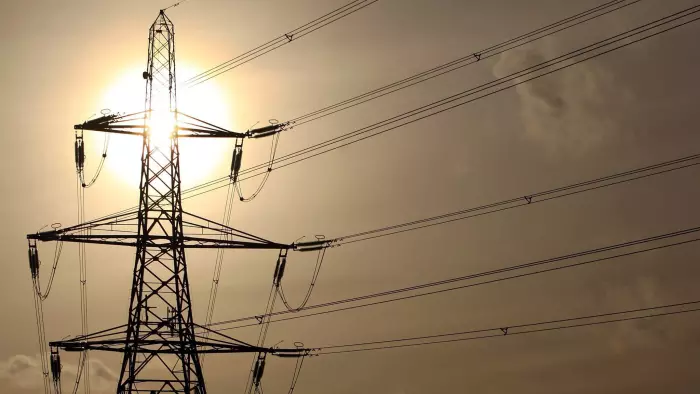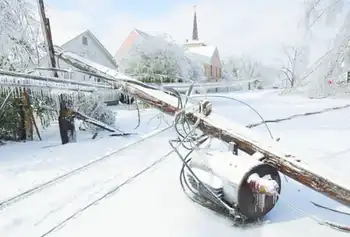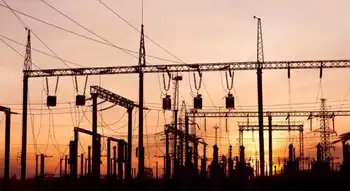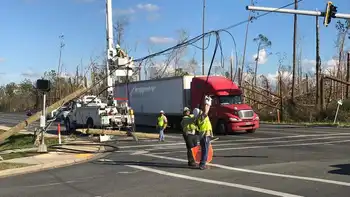Fuel rods fully exposed in Japanese reactor
By Toronto Star
Electrical Testing & Commissioning of Power Systems
Our customized live online or in‑person group training can be delivered to your staff at your location.

- Live Online
- 12 hours Instructor-led
- Group Training Available
Later, fuel rods at a separate reactor in the plant were fully exposed after it lost its ability to cool down, officials said. The exposure raises the risk of the unit overheating and adds to fears of a potential third explosion at the plant.
The morning blast occurred in Unit 3, which authorities have been trying to cool with seawater after a system failure in the wake of the recent massive earthquake and tsunami, triggered an order for hundreds of people to stay indoors, said Chief Cabinet Secretary Yukio Edano. The two disasters left at least 10,000 people dead.
Operators knew the seawater flooding would cause a pressure buildup in the reactor containment vessel — and potentially lead to an explosion — but felt they had no choice if they wanted to avoid a complete meltdown. In the end, the hydrogen in the released steam mixed with oxygen in the atmosphere and set off the blast.
The inner containment shell surrounding the Unit 3 reactor was intact, Edano said, allaying some fears of the risk to the environment and public. But the outer building around the reactor appeared to have been devastated, with only a skeletal frame remaining.
Tokyo Electric Power Co., which operates the plant, said radiation levels at Unit 3 were well under the levels where a nuclear operator must file a report to the government.
A similar explosion occurred at the plant's Unit 1, injuring four workers, causing mass evacuations and destroying much of the outer building.
Shortly after the most recent explosion, Tokyo Electric warned it had lost the ability to cool Unit 2. Hours later, the company said fuel rods in that unit were fully exposed, at least temporarily.
The company was trying to channel seawater into the reactor to cover the rods, cool them down and prevent another explosion at the stricken plant.
More than 180,000 people have evacuated the area in recent days, and up to 160 may have been exposed to radiation — pouring misery onto those already devastated by the twin disasters.
Japan's meteorological agency reported the prevailing wind in the area of the stricken nuclear plant was heading east — to the Pacific.
Seventeen U.S. military personnel involved in helicopter relief missions were found to have been exposed to low levels of radiation upon returning to the USS Ronald Reagan, an aircraft carrier about 160 kilometres offshore.
U.S. officials said the exposure level was roughly equal to one month's normal exposure to natural background radiation in the environment, and after scrubbing with soap and water, the 17 were declared contamination-free.
But as a precaution, the U.S. said the carrier and other U.S. 7th Fleet ships involved in relief efforts had shifted to another area.
While Japan has aggressively prepared for years for major earthquakes, reinforcing buildings and running drills, the impact of the tsunami — which came so quickly that not many people managed to flee to higher ground — was immense.
Officials were clearly overwhelmed by the scale of the crisis, with millions of people having spent three nights without electricity, water, food or heat in near-freezing temperatures.
Officials in one devastated town said they were running out of body bags.
Officials have declared states of emergency at six Fukushima reactors, where the twin disasters knocked out the main cooling systems and backup generators. Three are at Dai-ichi and three at the nearby Fukushima Daini complex.
Most attention, though, has been focused on Dai-ichi units 1 and 3, where operators have been funneling in sea water in a last-ditch measure to cool the reactors. A complete meltdown — the melting of the radioactive core — could release radioactive contaminants into the environment and pose major, widespread health risks.
Edano said no Fukushima reactor was near that point, and he was confident of escaping the worst scenarios.
International scientists say there are serious dangers but little risk of a Chernobyl-style catastrophe. Chernobyl, they note, had no containment shell around the reactor.
“The likelihood there will be a huge fire like at Chernobyl or a major environmental release like at Chernobyl, I think that's basically impossible,” said James F. Stubbins, a nuclear energy professor at the University of Illinois.
And, some analysts noted, the length of time since the nuclear crisis began indicates that the chemical reactions inside the reactor were not moving quickly toward a complete meltdown.
“We're now into the fourth day. Whatever is happening in that core is taking a long time to unfold,” said Mark Hibbs, a senior associate at the nuclear policy program for the Carnegie Endowment for International Peace. “They've succeeded in prolonging the timeline of the accident sequence.”
But despite official assurances, many residents expressed fear over the situation.
“First I was worried about the quake,” said Kenji Koshiba, a construction worker who lives near the plant. “Now I'm worried about radiation.” He spoke at an emergency centre in Koriyama, about 60 kilometres from the most troubled reactors.
Overall, more than 1,500 people had been scanned for radiation exposure in the area, officials said.
The UN nuclear agency said a state of emergency was also declared Sunday at another complex, the Onagawa power plant, after higher-than-permitted levels of radiation were measured there. It said Japan informed it that all three of those reactors there were under control.
Four nuclear complexes in northeastern Japan have reported some damage from the quake or the tsunami.











